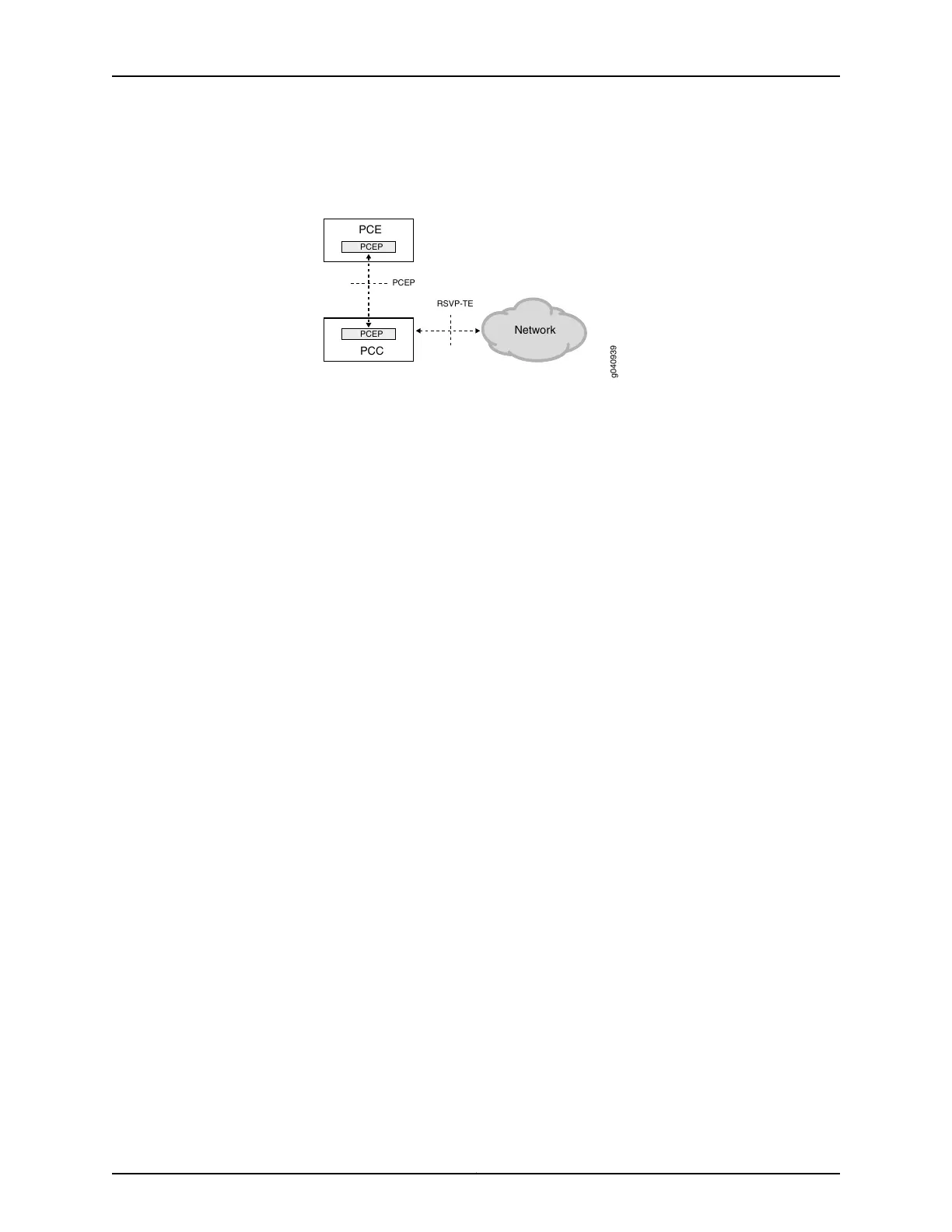Figure 36: PCEP Session
g040939
PCE
RSVP-TE
PCEP
PCC
PCEP
PCEP
Network
A TCP-based PCEP session connects a PCC to an external PCE. The PCC initiates the
PCEP session and stays connected to the PCE for the duration of the PCEP session.
During the PCEP session, the PCC requests LSP parameters from the stateful PCE. On
receiving one or more LSP parameters from the PCE, the PCC re-signals the TE LSP.
When the PCEP session is terminated, the underlying TCP connection is closed
immediately, and the PCC attempts to re-establish the PCEP session.
Thus, the PCEP functions include:
•
LSP tunnel state synchronization between a PCC and a stateful PCE—When an active
stateful PCE connection is detected, a PCC tries to delegate all LSPs to this PCE in a
procedure called LSP state synchronization. PCEP enables synchronization of the PCC
LSP state to the PCE.
•
Delegation of control over LSP tunnels to a stateful PCE—An active stateful PCE
controls one or more LSP attributes for computing paths, such as bandwidth, path
(ERO), and priority (setup and hold). PCEP enables such delegation of LSPs for path
computation.
•
Stateful PCE control of timing and sequence of path computations within and across
PCEP sessions–An active stateful PCE modifies one or more LSP attributes, such as
bandwidth, path (ERO), and priority (setup and hold). PCEP communicates these new
LSP attributes from the PCE to the PCC, after which the PCC re-signals the LSP in the
specified path.
Related
Documentation
Support of the Path Computation Element Protocol for RSVP-TE Overview on page 692•
Support of the Path Computation Element Protocol for RSVP-TE Overview
This section contains the following topics:
•
Understanding MPLS RSVP-TE on page 693
•
Current MPLS RSVP-TE Limitations on page 694
•
Use of an External Path Computing Entity on page 695
•
Components of External Path Computing on page 696
Copyright © 2017, Juniper Networks, Inc.692
ACX Series Universal Access Router Configuration Guide

